The development of chemical approaches to fossil hominin ecology in South Africa
DOI:
https://doi.org/10.17159/sajs.2025/18529Keywords:
Australopithecus africanus, Paranthropus robustus, dietary ecology, isotope biogeochemistry, C3 and C4 plant distributions, Sr/Ca, Ba/Ca, strontium isotopes, residenceAbstract
When Dart recognised the fossilised skull of the Taung Child as a hominin ancestor, he also observed that its “sere environment” produced few foods preferred by African apes in equatorial forests. He thus set in motion an inquiry into the dietary and environmental proclivities of fossil hominins. His observations ultimately led him to suggest a strong reliance on meat-eating, later elaborated into a hunting model. Subsequent investigations into the diets of the South African australopithecines led to the development of new approaches including dental microwear, stable light isotopes, and trace element analyses, which together led to a new focus on the prime importance of plant foods, for which there had been little direct behavioural evidence. Here we review why and how stable and radiogenic isotope approaches to hominin diet and residence patterns were developed in South Africa, the problems that had to be addressed, and the subsequent outcomes.
Significance:
We outline how a distinctive set of circumstances in South Africa combined to produce world-leading progress in palaeoanthropological and archaeological research based on fossil isotope biogeochemistry. They include a unique natural and fossil heritage, investment in scientific infrastructure and researchers well-versed in cross-disciplinary science. Together they played leading roles in addressing important questions about African fossil heritage. We point to where we believe future progress is required and we suggest that closer attention is paid to the role of plants because, as the basis of all ecosystems, they represent the most important element in the diets of most primates and hominins.
Downloads
Published
Issue
Section
License

All articles are published under a Creative Commons Attribution 4.0 International Licence
Copyright is retained by the authors. Readers are welcome to reproduce, share and adapt the content without permission provided the source is attributed.
Disclaimer: The publisher and editors accept no responsibility for statements made by the authors
How to Cite
- Abstract 323
- PDF 365
- EPUB 138
- XML 130
- Peer review history 257
- Abstract in Setswana 151

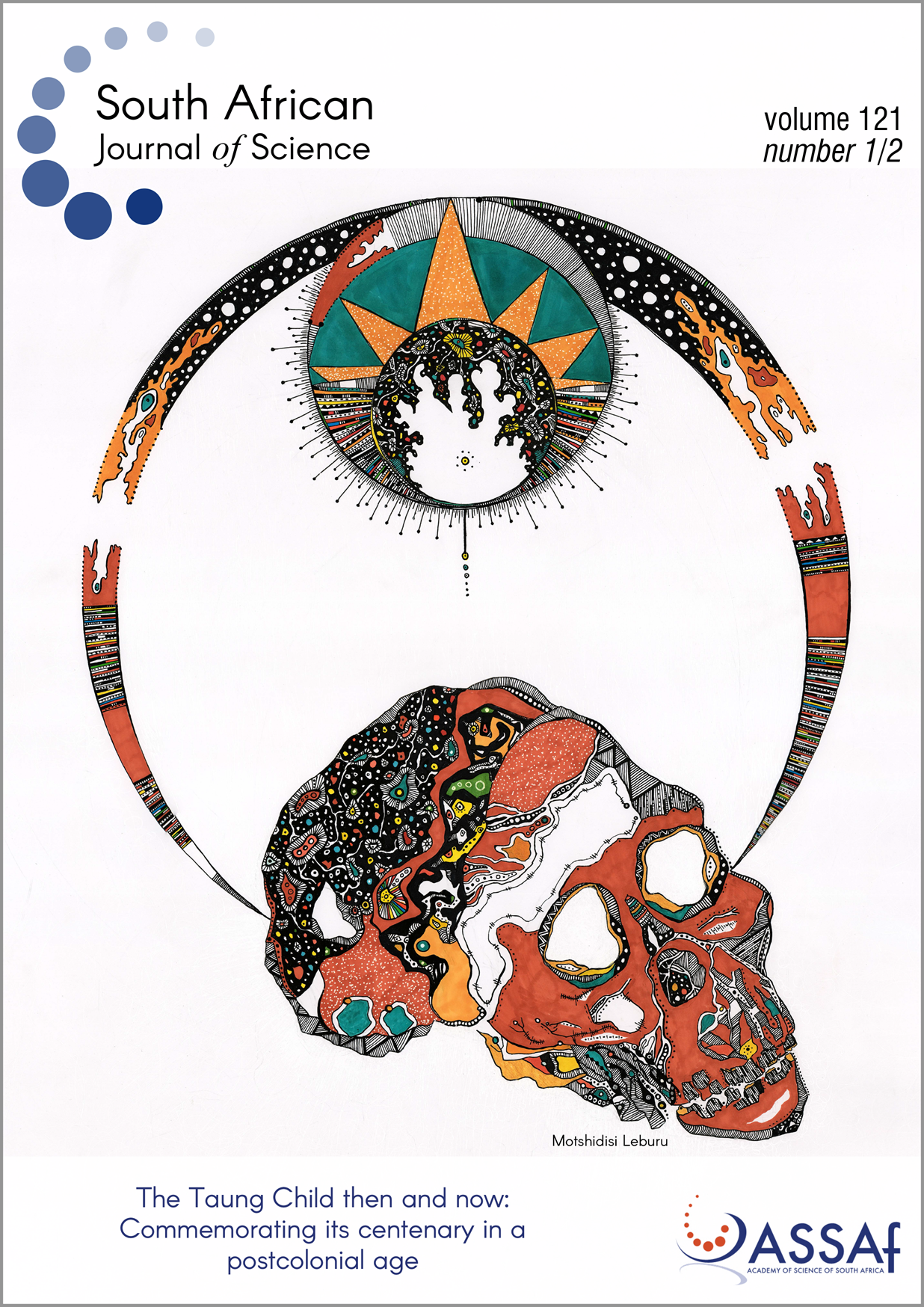




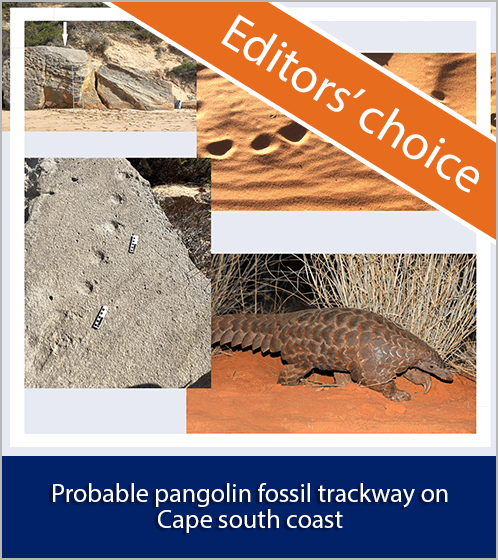
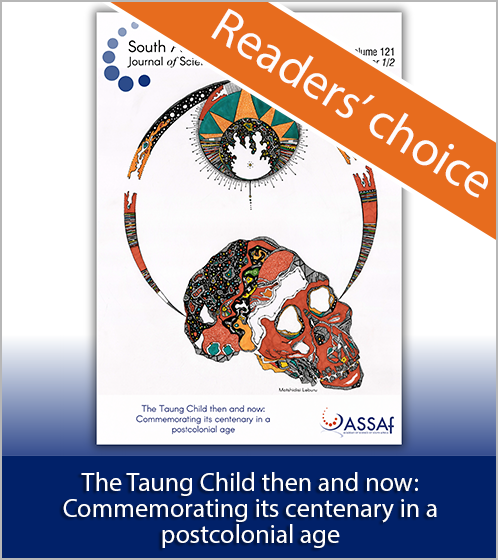

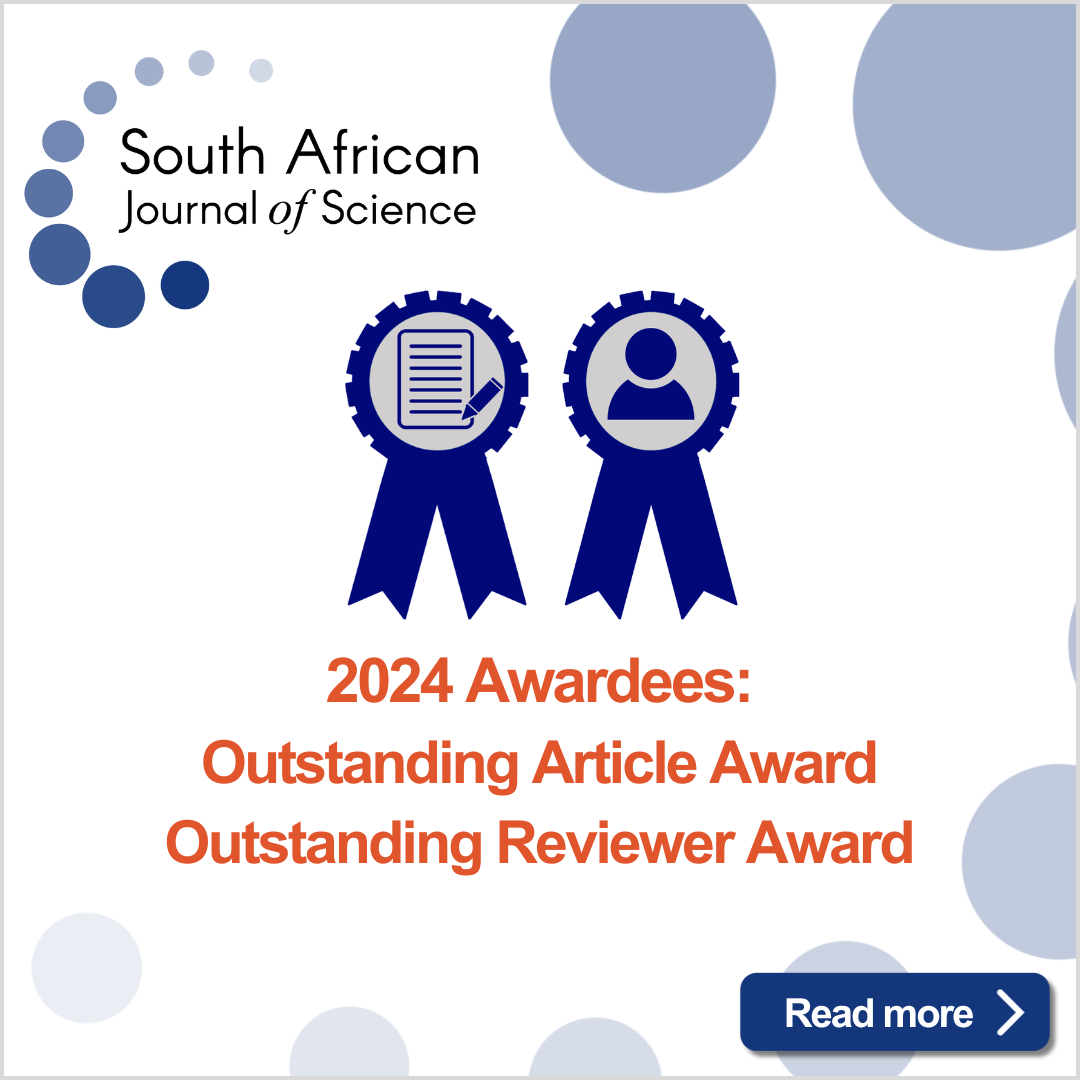

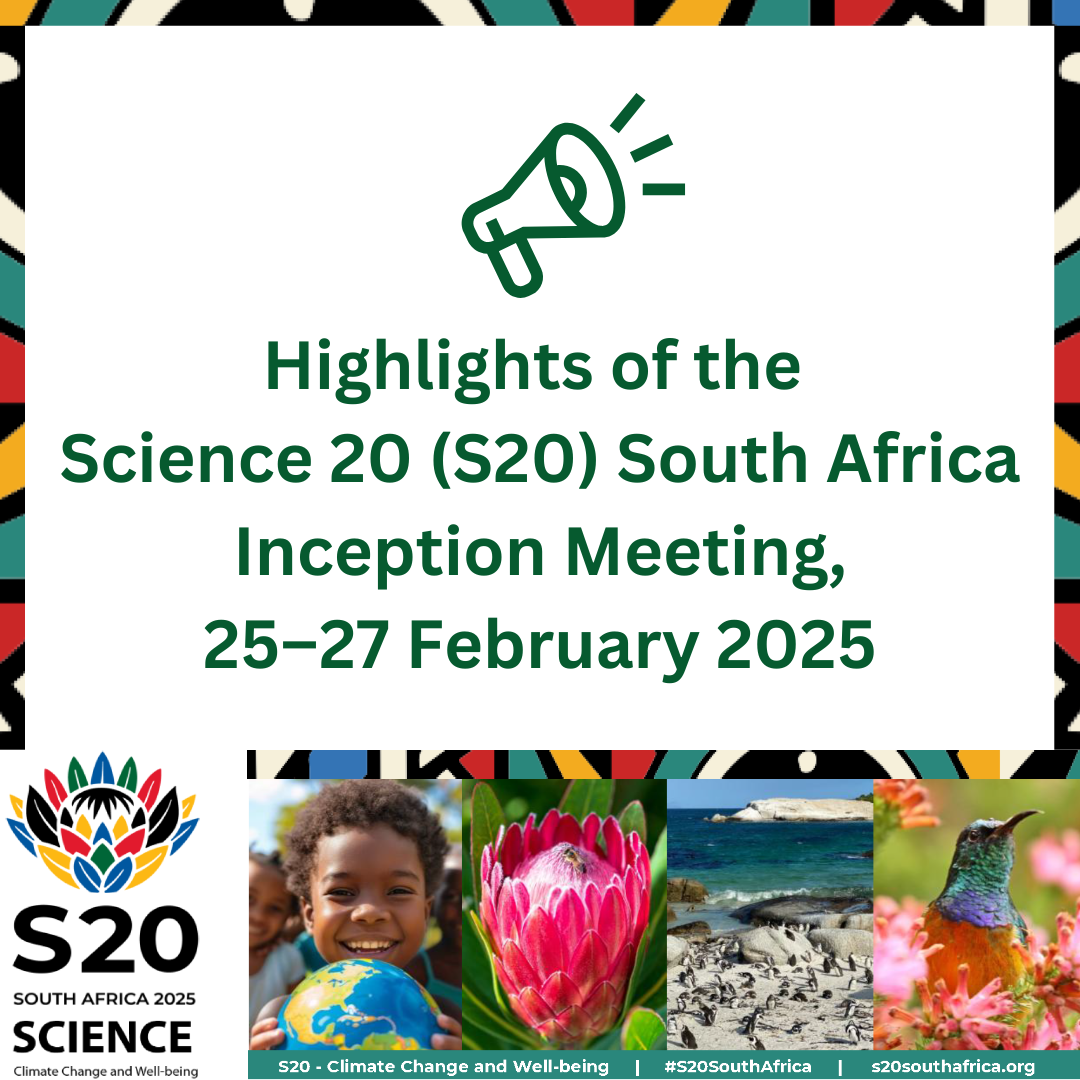
.png)